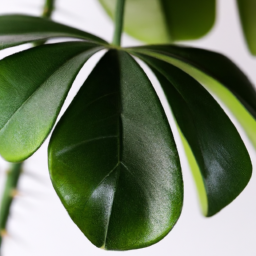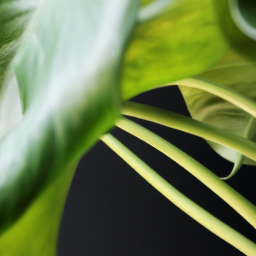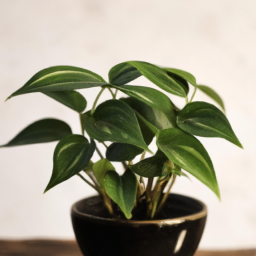
Are you a plant lover, but struggle to find the perfect indoor plants for your low-light spaces? Look no further! In this blog post, we will explore the wonderful world of indoor plants with low light requirements. Whether you have a dimly lit apartment or an office space with limited natural sunlight, there are plenty of beautiful and resilient plants that can thrive in these conditions. So, if you’re ready to bring some greenery into your life, let’s dive into the world of indoor plants with low light!
Benefits of Indoor Plants with Low Light
Introduction
Indoor plants not only enhance the aesthetic appeal of our living spaces but also offer numerous health benefits. However, not all areas in our homes receive ample natural light, making it challenging to find suitable plants that can thrive in low light conditions. Fortunately, there are several indoor plants that can flourish even in areas with limited sunlight. In this article, we will explore the benefits of indoor plants with low light and discover some of the best options for these conditions.
Improved Air Quality
One of the primary benefits of indoor plants, regardless of the light conditions, is their ability to purify the air. Plants absorb carbon dioxide and release oxygen through a process called photosynthesis. However, certain indoor plants, such as snake plants (Sansevieria), pothos (Epipremnum aureum), and peace lilies (Spathiphyllum), are particularly efficient at filtering out harmful toxins and pollutants from the air, including formaldehyde, benzene, and trichloroethylene.
These plants can effectively remove indoor air pollutants, which are often present in higher concentrations than outdoor air. By introducing indoor plants with low light requirements, you can enjoy cleaner and healthier air, even in areas with limited natural light.
Moreover, having indoor plants can also increase humidity levels, which is beneficial in dry indoor environments, especially during the winter months. Increased humidity can help alleviate respiratory problems, reduce the risk of dry skin, and prevent the spread of airborne viruses.
Mental Well-being
Indoor plants have a profound impact on our mental well-being. Numerous studies have shown that being in the presence of plants can reduce stress levels, improve mood, and enhance productivity. Even in low light conditions, indoor plants can create a calming and serene atmosphere, bringing a touch of nature indoors.
The green color of plants has a soothing effect on our minds and can help create a sense of tranquility. Additionally, caring for plants can be a therapeutic activity, providing a sense of purpose and accomplishment. Indoor plants with low light requirements, such as the ZZ plant (Zamioculcas zamiifolia) and the cast iron plant (Aspidistra elatior), are perfect options for those who want to experience the mental benefits of plants but have limited access to natural light.
Furthermore, studies have shown that indoor plants can improve concentration and productivity, making them excellent additions to home offices or study spaces. The presence of plants can boost creativity and help create a more conducive environment for work or study.
Enhanced Aesthetics
Indoor plants with low light requirements can add a touch of greenery and beauty to any indoor space. They come in a variety of shapes, sizes, and textures, allowing you to choose plants that complement your existing decor. Whether you prefer trailing vines, lush foliage, or sculptural plants, there are options available that can thrive in low light conditions.
Plants such as the Chinese evergreen (Aglaonema), the parlor palm (Chamaedorea elegans), and the spider plant (Chlorophytum comosum) are popular choices for low light environments due to their adaptability and attractive appearance. By strategically placing these plants in darker corners or areas with limited natural light, you can transform dull spaces into vibrant and inviting areas.
Moreover, indoor plants can act as natural room dividers, adding depth and dimension to open floor plans. By incorporating plants into your interior design, you can create visually appealing spaces that promote a sense of harmony and balance.
Conclusion
Indoor plants with low light requirements offer a multitude of benefits, ranging from improved air quality to enhanced mental well-being and aesthetics. These plants can effectively purify the air, create a calming atmosphere, and add beauty to any indoor space. By selecting the right plants and providing them with proper care, you can enjoy the benefits of indoor greenery, even in areas with limited natural light. So go ahead, bring some life into your home and reap the rewards of indoor plants with low light.

Popular Varieties of Indoor Plants that Thrive in Low Light Conditions
Indoor plants are a great way to bring nature into your home, but not all plants are suitable for low light conditions. If you have a room with limited natural light, don’t worry! There are plenty of beautiful and easy-to-care-for plants that can thrive in low light environments. In this article, we will explore some popular varieties of indoor plants that are perfect for low light conditions.
1. Snake Plant
The Snake Plant, also known as Sansevieria, is a popular choice for indoor gardening enthusiasts. It is well-known for its ability to survive in low light conditions and is extremely low maintenance. The Snake Plant has long, upright leaves that are dark green with yellow edges, giving it a unique and striking appearance.
This plant is not only visually appealing but also has several health benefits. It is known for its air-purifying properties, as it can remove toxins such as formaldehyde and benzene from the air. The Snake Plant is also known to release oxygen at night, making it an ideal choice for bedrooms.
When it comes to care, the Snake Plant is very forgiving. It can tolerate a wide range of light conditions, including low light. However, it is important not to overwater this plant as it is prone to root rot. Allow the soil to dry out between waterings and place the plant in a well-draining pot.
2. ZZ Plant
The ZZ Plant, scientifically known as Zamioculcas zamiifolia, is another excellent choice for low light environments. It has glossy, dark green leaves that grow in a graceful, arching pattern. The ZZ Plant is native to Eastern Africa and is known for its ability to survive in drought-like conditions, making it perfect for those who tend to forget to water their plants.
This plant is not only resilient but also highly adaptable. It can tolerate a wide range of light conditions, including low light and fluorescent lighting. The ZZ Plant can also survive in areas with high humidity or dry air, making it suitable for various rooms in your home.
When it comes to care, the ZZ Plant prefers to dry out between waterings. Overwatering can lead to root rot, so it’s important to allow the soil to dry out before watering again. The ZZ Plant is also sensitive to overfertilization, so it’s best to use a balanced houseplant fertilizer at half the recommended strength.
3. Pothos
Pothos, also known as Devil’s Ivy, is a popular trailing plant that is perfect for low light conditions. It has heart-shaped leaves that come in various shades of green, making it a visually appealing addition to any room. Pothos is also known for its ability to purify the air by removing toxins such as formaldehyde and benzene.
This plant is incredibly versatile and can thrive in a variety of light conditions, including low light. However, it is important to note that the variegated varieties of Pothos may lose their variegation in low light, so it’s best to opt for solid green varieties if you have limited natural light.
Pothos is relatively easy to care for and can tolerate some neglect. It prefers to dry out between waterings, so it’s important not to overwater. Pothos can also be propagated easily by taking stem cuttings and placing them in water or moist soil.
Conclusion
Having indoor plants in low light conditions doesn’t mean you have to compromise on greenery and beauty. The Snake Plant, ZZ Plant, and Pothos are just a few examples of popular indoor plants that can thrive in low light environments. These plants not only add a touch of nature to your home but also provide several health benefits. Remember to adjust your watering schedule accordingly and choose the right varieties for your specific light conditions. With a little care and attention, your indoor plants will flourish even in the darkest corners of your home.

Tips for Caring for Indoor Plants with Low Light
Indoor plants can bring life and beauty to any space, but not all plants thrive in low light conditions. If you have a room with limited natural light, don’t worry! There are still plenty of indoor plants that can thrive in low light environments. In this article, we will explore some tips and tricks for caring for indoor plants with low light, so you can create a green oasis even in the darkest corners of your home.
Choosing the Right Plants
When it comes to indoor plants that can tolerate low light conditions, there are several options to consider. Here are a few popular choices:
1. Snake Plant (Sansevieria trifasciata)
The snake plant is a hardy and versatile plant that can survive in almost any light condition, including low light. Its long, sword-shaped leaves are a beautiful addition to any room, and it requires minimal care. The snake plant can also help purify the air by removing toxins, making it a great choice for bedrooms or offices.
2. ZZ Plant (Zamioculcas zamiifolia)
The ZZ plant is another low light champion. With its glossy, dark green leaves, it adds a touch of elegance to any space. The ZZ plant is known for its ability to tolerate neglect and low light conditions, making it perfect for busy individuals or those with less-than-ideal lighting situations.
3. Pothos (Epipremnum aureum)
Pothos is a popular choice for indoor gardening beginners due to its low maintenance requirements and adaptability to different light conditions. It can thrive in low light but will also do well in brighter areas. Pothos plants have trailing vines with heart-shaped leaves, adding a cascading effect to your indoor jungle.
Providing Adequate Watering
Proper watering is crucial for the health of indoor plants, especially those in low light conditions. Here are some watering tips to keep in mind:
1. Check the soil moisture: Before watering your plants, check the moisture level of the soil by inserting your finger about an inch deep. If it feels dry, it’s time to water. If it’s still moist, wait a few more days before watering.
2. Water thoroughly: When watering, make sure to thoroughly saturate the soil until water drains out of the bottom of the pot. This ensures that the entire root system receives moisture.
3. Avoid overwatering: Overwatering is a common mistake that can lead to root rot and other issues. Always allow the top inch or two of soil to dry out before watering again. It’s better to underwater than overwater.
Creating the Right Environment
While low light plants are more tolerant of less-than-ideal conditions, creating the right environment can still greatly enhance their growth. Here are some tips for creating an optimal environment for indoor plants with low light:
1. Placement: Even though low light plants can survive in darker areas, they still need some indirect light. Place them near a window with filtered light or a few feet away from a bright window. Avoid placing them in direct sunlight as it can scorch the leaves.
2. Rotate regularly: Indoor plants tend to grow towards the light source, which can result in uneven growth. To promote balanced growth, rotate your plants every few weeks so that all sides receive equal exposure to light.
3. Supplement with artificial light: If your low light conditions are extremely limited, you can supplement natural light with artificial light sources. LED grow lights are a great option as they provide the right spectrum of light for plant growth without generating excessive heat.
By following these tips, you can successfully care for indoor plants with low light and create a thriving green oasis in any room of your home. Remember to choose the right plants, provide adequate watering, and create the right environment for optimal growth. Enjoy the beauty and benefits of indoor plants, even in the darkest corners!
In Summary
Having indoor plants is a great way to bring a touch of nature into your home. However, not all areas of your house receive ample sunlight to support plant growth. If you’re facing this issue, worry not! There are plenty of indoor plants that thrive in low-light conditions, making them perfect for those darker corners or rooms with limited windows.
One such plant that is well-suited for low-light environments is the snake plant, also known as the mother-in-law’s tongue. This hardy plant can tolerate a wide range of lighting conditions and is incredibly low maintenance. With its long, upright leaves that come in various shades of green, the snake plant adds a touch of elegance to any space. Another great option is the pothos plant. This trailing vine with heart-shaped leaves is not only beautiful but also a fantastic air purifier. Pothos plants can thrive in low-light areas, making them perfect for offices or rooms with minimal natural light.
Top FAQs:
Q1: What are indoor plants with low light requirements?
A1: Indoor plants with low light requirements are plants that can thrive in areas with minimal natural light. These plants have adapted to survive in shaded environments and are perfect for rooms with limited sunlight or spaces away from windows.
Q2: What are the benefits of having indoor plants with low light requirements?
A2: Indoor plants with low light requirements offer several benefits. Firstly, they can improve indoor air quality by filtering out toxins and releasing oxygen. Secondly, they can add a touch of greenery and aesthetic appeal to any room. Additionally, studies have shown that indoor plants can reduce stress, boost mood, and increase productivity.
Q3: How do I care for indoor plants with low light requirements?
A3: Caring for indoor plants with low light requirements is relatively easy. Here are a few tips: place them in areas with indirect light, avoid direct sunlight as it can damage their leaves, water them sparingly as they don’t require as much moisture as other plants, and ensure proper drainage to prevent root rot. It’s also important to occasionally dust their leaves and monitor for any signs of pests.
Q4: Which indoor plants with low light requirements are suitable for beginners?
A4: If you’re new to indoor gardening, some great options for low light conditions include pothos, snake plants, ZZ plants, and peace lilies. These plants are known for their resilience and ability to tolerate low light environments. They require minimal care and are forgiving if you forget to water them occasionally.
Q5: Can indoor plants with low light requirements survive in completely dark rooms?
A5: While some indoor plants can tolerate low light conditions, it’s important to note that they still require some degree of light to survive. Completely dark rooms without any light source would not be suitable for these plants. However, if there is a small amount of ambient light, such as from a nearby window or artificial light, some low light plants may still be able to survive.
Dr. Olivia Green is a botanist with over two decades of experience in indoor plant cultivation. She holds a Ph.D. in Plant Biology and has dedicated her career to researching plant behavior in controlled environments. Dr. Green is passionate about helping plant enthusiasts master the art of indoor gardening through her extensive knowledge and practical insights.


